Some more of Allan’s favourite photos from 2023 and he’s still keeping up the idea of some novel thematic links. We’ll leave it to him to explain:
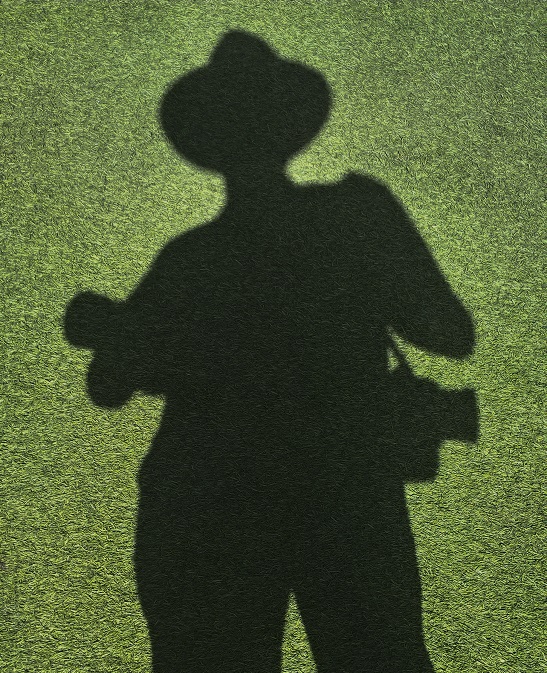
Looking through the 2023 archive there are a few venues that turn up regularly; one of them is the award-winning Green Note in Camden. Artists love to play there, not because it’s a huge venue; there are plenty of those around in London and Green Note has a capacity that doesn’t reach three figures. The reason artists like it is that it’s what Americans call a listening room, where audiences want to hear the music and they show their respect for the artists by not talking during performances. Here’s my five choices, all from Talentbanq nights, in chronological order:
Saara Kaldma
The title of the night was ‘BV’s Up Front’ and featured sets from Saara Kaldma and Gertrud Aasaroht. I’ve seen Saara and Gertrud many times as backing vocalists with Lisa Canny. They do a fabulous job with Lisa and, like most backing vocalists, have fabulous voices. Saara demonstrated the effectiveness of “lead singer lighting” as she waited for her vocal cue:

Kieran Morgan
This gig was billed as ‘The Road to Madison Square Garden’. No artists were announced, but the event still sold out in advance. The featured artists were Isabella Coulstock who, among other things, has been touring with Jools Holland, and the mighty Morganway. I’ve shot Morganway a few times and my best shots are usually of singer SJ and fiddle player Nicky because they’re always at the front. This is Green Note; everyone’s at the front, so I managed to grab this nice shot of Keiran Morgan:
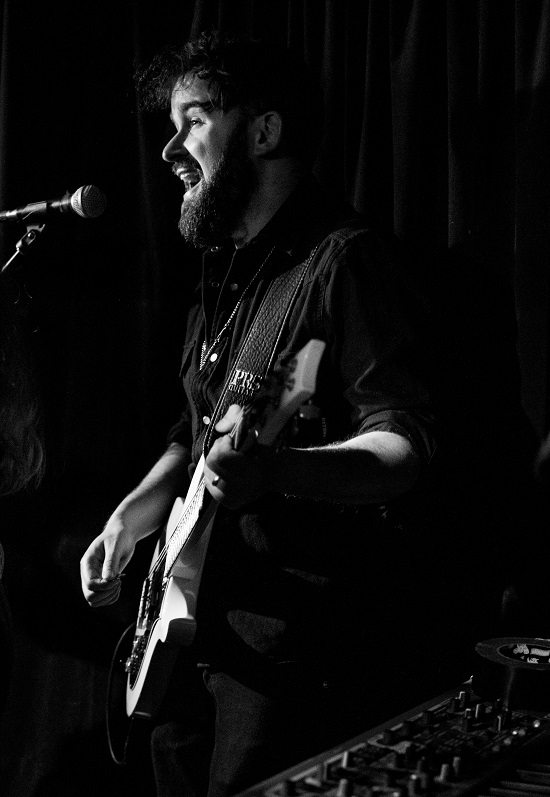
Maddie Hamilton
Maddie’s a cellist who often plays in Eleni Skarpari’s fluid collective Echo Wants her Voice Back. I’ve shot Eleni loads of times and Maddie’s been at a few of those gigs but I’ve never quite managed to get the killer shot. I spoke to the band at soundcheck and rashly promised Maddie that I would get a really nice shot of her this time. The gig photographer gods were on my side this time; as she looked over and made eye contact wit Eleni, a wisp of hair fell over her face and some colour from her tattoos was exposed. Done.
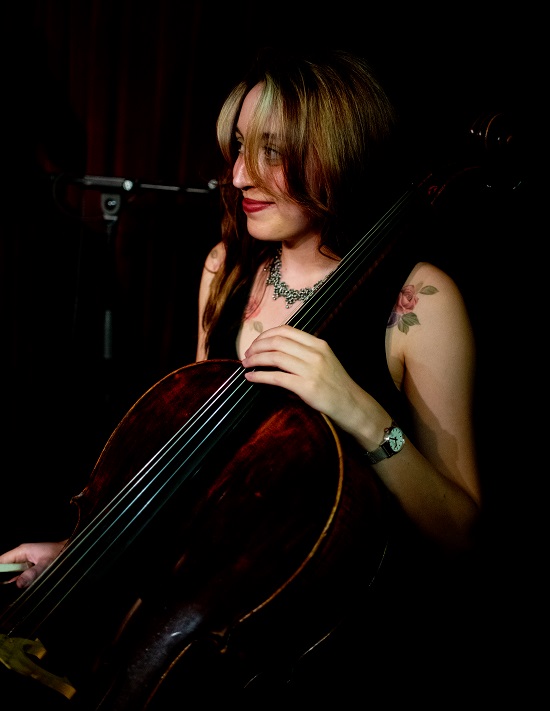
Pete Gow
Pete’s a really interesting guy. He’s originally from Scotland (he gets bonus points for that) and he’s a friend and former bandmate of guitar-slinger extraordinaire, Jim Maving (more bonus points). Pete’s songwriting is packed with characters that are contemporary Brits written by Raymond Chandler or Damon Runyon and he’s partial to a bit of a rummage around in the murkier ends of relationships and the music business (even more bonus points). He’s left-handed, which forces you to think all over again about shooting angles and he has a very interesting and photogenic look. And he’s a good bloke (thanks for the album, Pete). You decide:
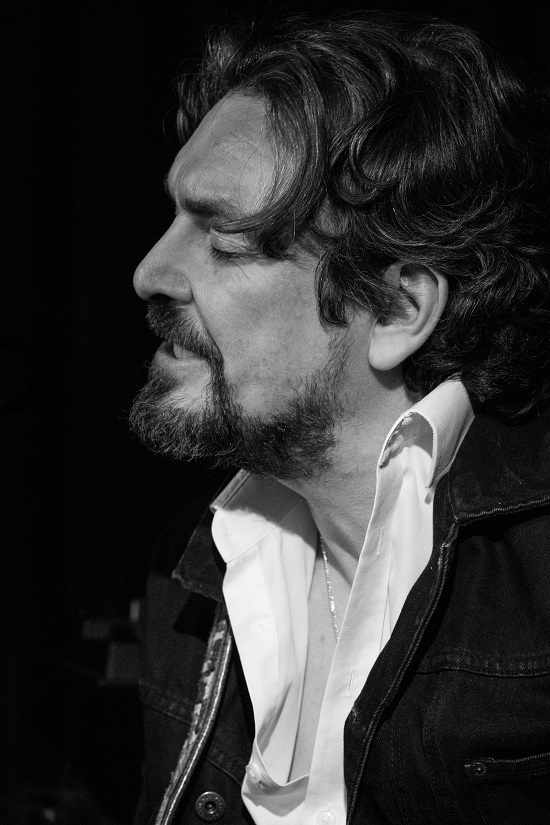
Sophey Maye
I only met Sophey for the first time a few weeks ago at Kylie’s Kiwi Christmas, hosted by Kylie Price before going back to New Zealand for Christmas. Sophey’s a Kiwi, like Kylie, and we spent a while chatting before the gig. It was obvious from her level of animation that she was going to be a perfect subject to shoot. I also loved her songs and her voice. She positioned herself in the Green Note portrait lighting sweet spot and it was just a question of framing and waiting for the moment:
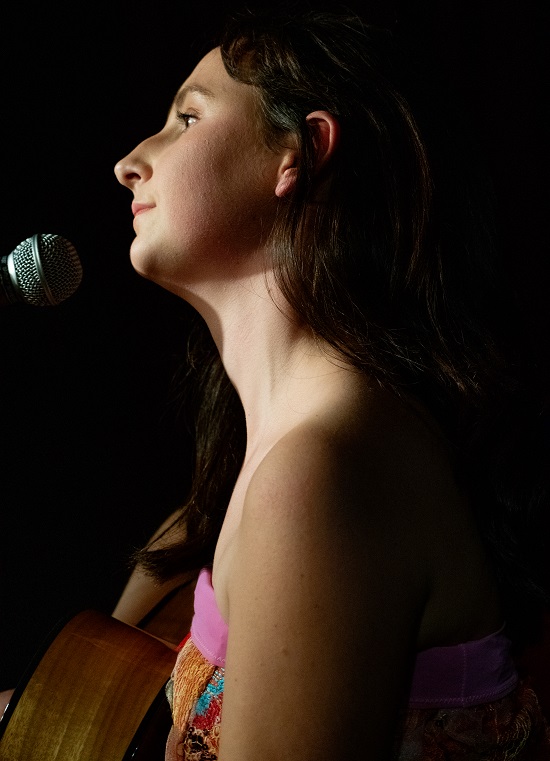
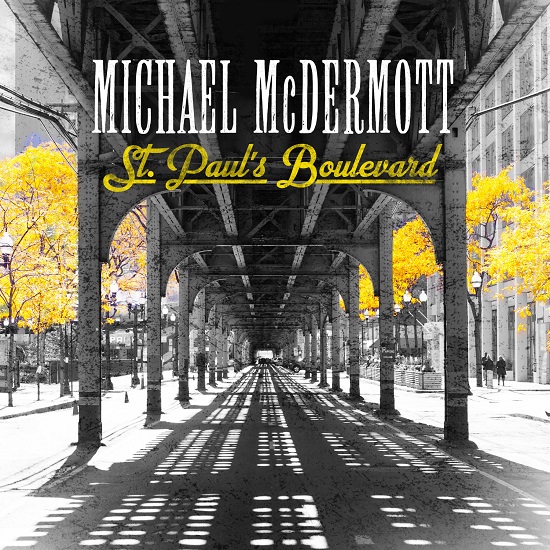
Michael McDermott isn’t making life easy – every year he releases an album (sometimes even two) that grabs your attention immediately with quality of the songwriting, the quality of the playing and arrangements, and the sheer variety of influences from the classic American pop/rock songbook. The difficulty lies in trying to think of something new to say about this steady sequence of excellence. There are some easy comparisons to make, but when all of those have already been made, it’s a challenge to know where to go next. I guess it’s safe to say that ‘St Paul’s Boulevard’ is a continuation of the winning sequence; it’s a classic album that would be huge if we still had a significant market for albums.
There’s a narrative running through Michael’s work since The Westies ‘Six on the Out’ of degradation, recovery and redemption. ‘St Paul’s Boulevard’ feels like a postscript to that narrative, looking back to the lowest of times with clear-eyed detachment and looking forward to the future with technicolour optimism. As you would expect from a Michael McDermott album, ‘St Paul’s Boulevard’ is packed with historical, geographical, mythological, literary, biblical and popular culture references, particularly ‘Marlowe’ which is a nod in the direction of Deacon Blue’s ‘Real Gone Kid’ and a tribute to Raymond Chandler’s sleuth Philip Marlowe.
The arrangement of title song is a slow builder; the ambient intro with slide and piano gradually fills out into a full band sound as the various characters in the story make their brief appearance. The Boulevard is that place we have in our history that’s full of possibility for triumph or tragedy; the place where we met characters that would have positive and negative impacts on our lives. There are a few references to heroes on the album and the most telling is probably in this song: “None of the heroes around here have capes, they’re just talking in taverns and on fire escapes”.
Michael McDermott isn’t afraid of throwing in musical or lyrical references; ‘Where the Light Gets In” has a hint of Coldplay’s ‘Higher Power” and the obvious Leonard Cohen reference, while there’s plenty of chiming guitar in Byrds/Tom Petty/Flaming Groovies style. While we’re on the subject of guitars, a true master of the fretted stringed instrument plays on the album and any project featuring Will Kimbrough is going to be good; he plays guitar, mandolin and banjo across the album.
‘St Paul’s Boulevard’ is another powerful Michael McDermott album that blends musical references from folk, soul, country, rock and other areas to produce an album that looks back to difficult times but also looks forward with optimism (“Peace, lave and brilliant colours to you all”). It’s a celebration of this moment and the moments to come.
‘St Paul’s Boulevard’ is out now on Pauper Sky Records (PSR010).
Here’s the video for the album’s final track, ‘Paris’:
 Andy Fleet isn’t the most prolific of album artists; his last album was in 2013. Which doesn’t really matter; his musical world is not ruled by release schedules, so why not release albums when you’re happy you’ve created something that people will want to listen to and appreciate. And I need to apologise here, this album has been out since March but somehow managed to avoid my attention until now and that’s my loss because “The Sleepless Kind” is a little gem of an album, the kind you want to listen to again and again. Even the cover is a nice piece of art by Alban Low inspired by the song ”Through Closed Eyes”.
Andy Fleet isn’t the most prolific of album artists; his last album was in 2013. Which doesn’t really matter; his musical world is not ruled by release schedules, so why not release albums when you’re happy you’ve created something that people will want to listen to and appreciate. And I need to apologise here, this album has been out since March but somehow managed to avoid my attention until now and that’s my loss because “The Sleepless Kind” is a little gem of an album, the kind you want to listen to again and again. Even the cover is a nice piece of art by Alban Low inspired by the song ”Through Closed Eyes”.
The title tells the story; the theme of the album is the night and particularly the musicians who try to scratch a living in those hours of darkness, and those who make the bleary-eyed commuter journey to a day job that enables them to play another night. “The Sleepless Kind” is a tribute to those people who make music because they love making music. Is there a better reason?
“The Sleepless Kind” (which tops and tails the album) is a dreamy instrumental that sounds like it should soundtrack a Raymond Chandler story: gentle piano and moody, muted trumpet of Andre Canniere combine to paint a picture of a jazz club in the early hours, when you stop worrying about the last train and start thinking about the first train.
The remaining seven songs demonstrate the wide variety of influences feeding into Andy Fleet’s unique style. The band is superb with the slower, more evocative songs but goes up through the gears really smoothly for the more uptempo songs , such as “Been There, Drunk That” and the rollicking seventies, horn-driven groove of “Love’s Enemy”, which tells the story of a collector in a style that hints at Al Stewart and maybe even Gerry Rafferty. “Stolen Years”, a John Lennon tribute, hints at Thunderclap Newman, but “The Hobbyist” and “Through Closed Eyes” are the absolute pivot of the album.
“The Hobbyist” is a powerful tribute to Andy’s friend, the late Iain Bull, opening with some Jackson Browne-like piano, while “Through Closed Eyes” opens with a with a fairly traditional jazz set-up of keys, bass, drums (with brushes, initially) and trumpet and spins out its groove for nearly eight gorgeous minutes, telling the story of the London night from the perspective of an owl, silently watching over the neon-lit streets.
Mainly jazz-orientated, “The Sleepless Kind” also hints at blues, rock, pop and soul. The musicianship is superb throughout, never over-played, and the songs are well-constructed and meaningful. The album oozes class and rewards close attention. One to listen to in the small hours with a single malt close at hand.
“The Sleepless Kind” is out now on Low Vinyl Records (LV1608).
And here’s a little video snippet for you:
Ok, call me obsessive if you like but as well as listening to a lot of albums and going to as many gigs as I can, I also read the odd book or two about music and popular culture and many of those are worth sharing with anyone who checks out MusicRiot regularly. This list was difficult to pin down to five from the start, but it became even more difficult on Christmas Day when I was given a copy of the Donald Fagen memoir/tour diary/article compilation, “Eminent Hipsters”. So I guess that’s a pretty good place to start.
“Eminent Hipsters” – Donald Fagen
 Where do I start with Donald Fagen? With Walter Becker, he was half of one of my favourite 70s bands, Steely Dan and then went on to release the classic solo album, “The Nightfly” in 1982, followed (not too closely) by “The Kamakiriad” in 1993. You’ve probably guessed by now, I’m a bit of a fan. “Eminent Hipsters” is partly an explanation, through a series of articles, of the factors which influenced the Steely Dan sound (cool jazz, cop dramas and wise-ass comedians) and the Donald Fagen solo sound (science fiction and mid-century paranoia). If you love the music, you’ll be fascinated by these observations about its roots. The second part of this slim volume is devoted to Fagen’s diary from the 2012 “Dukes of September Rhythm Revue” tour which is, by turn, snarky, moving, insightful and downright hilarious.
Where do I start with Donald Fagen? With Walter Becker, he was half of one of my favourite 70s bands, Steely Dan and then went on to release the classic solo album, “The Nightfly” in 1982, followed (not too closely) by “The Kamakiriad” in 1993. You’ve probably guessed by now, I’m a bit of a fan. “Eminent Hipsters” is partly an explanation, through a series of articles, of the factors which influenced the Steely Dan sound (cool jazz, cop dramas and wise-ass comedians) and the Donald Fagen solo sound (science fiction and mid-century paranoia). If you love the music, you’ll be fascinated by these observations about its roots. The second part of this slim volume is devoted to Fagen’s diary from the 2012 “Dukes of September Rhythm Revue” tour which is, by turn, snarky, moving, insightful and downright hilarious.
Donald Fagen writes in an instantly-identifiable style betraying a debt to Raymond Chandler and Dashiell Hammett, which sneaks in when describing Audrey Hepburn in “Breakfast at Tiffany’s” as getting :”out of that cab on Fifth Avenue in a black dress and pearls in the early morning, I wanted to sip her through a straw”. It’s beautifully written and you can get through it in a few hours; it takes 170 pages to deliver a message that most rock biographies take at least five times as long to get over.
“Bedsit Disco Queen: How I Grew Up and Tried to be a Pop Star” – Tracey Thorn
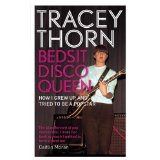 If Donald Fagen’s prose style is easily identifiable, then Tracey Thorn’s is even more so. I’m always impressed when musicians get this right (Peter Hook and Luke Haines also do it particularly well) and, from the first paragraph, this is pitch-perfect ‘Popstar Trace’. The book takes us from the Marine Girls beginnings through the EBTG false starts and eventual success to the beautiful Massive Attack vocals (I’m biased, but you should read about the origins of the modern classic, “Protection” here) and the worldwide Todd Terry-remixed success of “Missing”.
If Donald Fagen’s prose style is easily identifiable, then Tracey Thorn’s is even more so. I’m always impressed when musicians get this right (Peter Hook and Luke Haines also do it particularly well) and, from the first paragraph, this is pitch-perfect ‘Popstar Trace’. The book takes us from the Marine Girls beginnings through the EBTG false starts and eventual success to the beautiful Massive Attack vocals (I’m biased, but you should read about the origins of the modern classic, “Protection” here) and the worldwide Todd Terry-remixed success of “Missing”.
Tracey’s style is perfectly self-deprecatory; you never feel a hint of false modesty and the mentions of famous musicians are always very matter-of-fact, including the story about waiting to pick the kids up from school and being shouted at by George Michael from a Range Rover. This is a wonderful memoir from a genuine pop star.
“Yeah, Yeah, Yeah: The Story of Modern Pop” – Bob Stanley
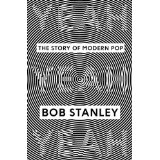 It’s obvious from the outset that this is actually a companion piece to the classic 2012 St Etienne album, “Words and Music”. The album was a voyage through the history of British pop music and the book is an extended verbal remix of the ground covered by the album. What’s equally obvious is that Bob Stanley is both an enthusiast and an insider, which gives him a unique perspective on his subject. He aims to show the links between different styles using not just the music, but also sociological and technological developments. If you’re interested in the history of pop music and you’ve done a bit of research, you might disagree with some of his pronouncements, but it’s a big book and you’ll probably agree with ninety per cent of them.
It’s obvious from the outset that this is actually a companion piece to the classic 2012 St Etienne album, “Words and Music”. The album was a voyage through the history of British pop music and the book is an extended verbal remix of the ground covered by the album. What’s equally obvious is that Bob Stanley is both an enthusiast and an insider, which gives him a unique perspective on his subject. He aims to show the links between different styles using not just the music, but also sociological and technological developments. If you’re interested in the history of pop music and you’ve done a bit of research, you might disagree with some of his pronouncements, but it’s a big book and you’ll probably agree with ninety per cent of them.
The book takes the first NME chart in 1952 as its starting point (which is logical and not controversial) and the end of vinyl as a chart force in 1993 as its end point, when the first Number One singles not to have been released as a 7” single or (a few months later) on vinyl at all topped the charts (if you want to know what they are, you can buy the book ). It’s a slightly more controversial choice but still with a logical basis for someone who grew up in the age of vinyl. The book has an authority derived from Bob Stanley’s experience as a writer and member of a very successful pop group but never slips into the socio-cultural academic approach of, for example, Simon Reynolds. The theme that underpins everything else in this book is that Bob Stanley is still a fan who wants you to come round and listen to his records, and that makes this an unmissable book.
“Here Comes Everybody: The Story of the Pogues” – James Fearnley
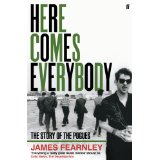 I’ve always been a fan of the “inside story” biography, particularly those that aren’t ghost-written attempts at cultural revisionism. This memoir by James Fearnley is, at times, brutally and crushingly honest about members of The Pogues and he doesn’t spare himself either. The book begins by setting the scene with Shane MacGowan’s departure from the band in 1991 before moving back to Fearnley’s initial meeting with MacGowan at an audition for The Nips in 1980.
I’ve always been a fan of the “inside story” biography, particularly those that aren’t ghost-written attempts at cultural revisionism. This memoir by James Fearnley is, at times, brutally and crushingly honest about members of The Pogues and he doesn’t spare himself either. The book begins by setting the scene with Shane MacGowan’s departure from the band in 1991 before moving back to Fearnley’s initial meeting with MacGowan at an audition for The Nips in 1980.
The book is a (mainly) unsentimental account of the rise and fall of The Pogues from the viewpoint of someone close enough to see everything but with enough distance to retain some objectivity. From the chaotic managerless beginnings through the unpopular but successful stewardship of Frank Murray, the story is underpinned at all times by MacGowan’s unpredictability and seemingly random self-destructive urges. James Fearnley tries very hard to balance the singer’s inexcusable behaviour against the genius of the songs, but it’s up to you if you buy that line; I certainly don’t. My only criticism is that James Fearnley spends a little too much time trying to emphasise the fact that he’s a writer and occasionally introduces unnecessarily florid prose to prove it; putting that aside, it’s still a winner.
“Sounds like London: 100 Years of Black Music in the Capital” – Lloyd Bradley
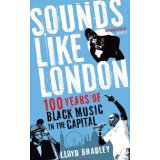 Bear with me for a minute here; this will all make sense presently. Earlier this year I read “How Soon is Now?: The Madmen and the Mavericks who made Independent Music 1975-2005” by Richard King. It’s a very good book and a must for geeks like us, but it attracted a lot of criticism because it didn’t touch on the black music scene. Richard King was even accused, pathetically, of racism in some quarters; you might even have read about it. Personally, I prefer to read authors who write about subjects they understand and that really inspire them; if Richard King didn’t have the expertise, contacts or inspiration to write about the black music scene, then Lloyd Bradley certainly did.
Bear with me for a minute here; this will all make sense presently. Earlier this year I read “How Soon is Now?: The Madmen and the Mavericks who made Independent Music 1975-2005” by Richard King. It’s a very good book and a must for geeks like us, but it attracted a lot of criticism because it didn’t touch on the black music scene. Richard King was even accused, pathetically, of racism in some quarters; you might even have read about it. Personally, I prefer to read authors who write about subjects they understand and that really inspire them; if Richard King didn’t have the expertise, contacts or inspiration to write about the black music scene, then Lloyd Bradley certainly did.
The title is a little misleading; there’s very little about pre-1950s black music, and it also deals with regional English offshoots from the London scene but those aren’t criticisms, just observations. The reason for the comparison with Richard King’s book is that one of Lloyd Bradley’s recurring themes is that black British music has always developed and prospered healthily out of the mainstream when produced and distributed independently.
Once the book reaches the point where Lloyd Bradley can introduce interviews with the players who made black British music happen (the steel pan players, the jazzers, the sound system pioneers, the Britfunk players and the mainstream crossovers Eddy Grant, Janet Kay, Jazzie B and the rest), the narrative really takes off with stories of the sound systems and records being sold out of the back of a car and distributed around the country in the same way. Lloyd Bradley takes us through calypso, ska, reggae, lovers rock, dub, britfunk, 98 bpm, trip hop, jungle, d’n’b, UK garage, dubstep and grime along with a host of short-lived one-way streets with an unassuming and easy authority that is very seductive. If you want an introduction to black British music, this is the book for you.
OK, spoilers alert; I’ve relented. I’ll tell you that the chart-toppers Bob Stanley refers to in 1993 and 1995 respectively are Culture Beat’s “Mr Vain” and Celine Dion’s “Think Twice”, but you should still read the book. Actually you should read all of these books.


